1999, Charles King
Most university courses involve some sort of extended writing assignment, usually in the form of a research paper. Papers normally require that a student identify a broad area of research related to the course, focus the topic through some general background reading, identify a clear research question, marshal primary and secondary resources to answer the question, and present the argument in a clear and creative manner, with proper citations.
That is the theory, at least. But how do you go about doing it all? This brief guide provides some answers.
Teaching Yourself
From the outset, keep in mind one important point: Writing a research paper is in part about learning how to teach yourself. Long after you leave college, you will continue learning about the world and its vast complexities. There is no better way to hone the skills of life-long learning than by writing individual research papers. The process forces you to ask good questions, find the sources to answer them, present your answers to an audience, and defend your answers against detractors. Those are skills that you will use in any profession you might eventually pursue.
The Five Commandments of Writing Research Papers
To write first-rate research papers, follow the following simple rules�well, simple to repeat, but too often ignored by most undergraduates.
1. Thou shalt do some background reading, think hard, and speak with the professor in order to identify a topic.
At the beginning of a course, you will probably not know enough about the major scholarly topics that are of most importance in the field, the topics that are most well-covered in the secondary literature or the topics that have already had the life beaten out of them by successive generations of writers.
You should begin by doing some general reading in the field. If nothing else, begin with the Encyclopaedia Britannica. a wonderful but sadly neglected resource. Read a few books or articles on topics you find of interest. Follow up the suggested reading on the course syllabus or the footnotes or bibliographies of the texts you are reading for the course. After that, speak with the professor about some of your general ideas and the possible research directions you are thinking about pursuing. And you should do all this as early in the course as possible.
2. Thou shalt have a clear research question.
A research question, at least in the social sciences, begins with the word �why� or �how.� Think of it as a puzzle: Why did a particular political or social event turn out as it did and not some other way? Why does a particular pattern exist in social life? Why does a specific aspect of politics work as it does? How has a social or political phenomenon changed from one period to another? The question can be general or particular. Why have some countries been more successful in the transition from Communism than others? Why did the Labour Party win the last British general election? How have conceptions of race changed in the US since the 1960s? How do different electoral systems affect the behavior of political parties?
The point is that you should attempt to identify either:
- novel trends, developments or outcomes in social life that are not readily apparent (the �how� questions), or
- the causes of a particular event or general trend (the �why� questions).
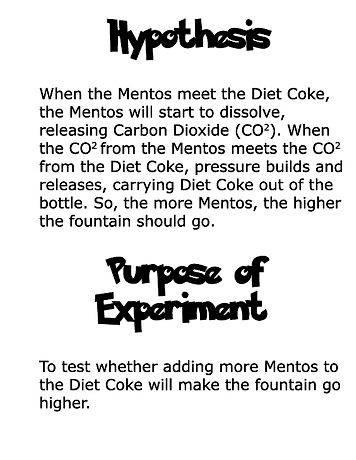
Professional social scientists�historians, political scientists, sociologists, international affairs experts�work on both these kinds of questions. In the best published social science writing you will be able to identify a clear �how� or �why� question at the heart of the research.
�How� and �why� questions are essential because they require the author to make an argument. Research questions that do not require an argument are just bad questions. For example, a paper on �What happened during the Mexican revolution?� requires the author to do no more than list facts and dates�a good encyclopedia entry, maybe, but not a good research paper. �What� and �when� questions are only the starting point for writing research papers. Obviously, you need to have a firm grasp of the facts of the case, but you must then move on to answer a serious and important �why� or �how� question in the paper itself.
3. Thou shalt do real research.
�Real research� means something other than reading secondary sources in English or pulling information off the Internet. Real research means using primary sources. What counts as a primary source, though, depends on what kind of question you are trying to answer.
Say you want to write a paper on the causes of Communism�s demise in eastern Europe. You would begin by reading some general secondary sources on the collapse of Communism, from which you might surmise that two factors were predominant: economic problems of Communist central planning and Mikhail Gorbachev�s reforms in the Soviet Union. Primary sources in this case might include economic statistics, memoirs of politicians from the period or reportage in east European newspapers (available in English or other languages). Bring all your skills to bear on the topic. Use works in foreign languages. Use software packages to analyze statistical data.
Or say you want to write about how conceptions of national identity have changed in Britain since the 1980s. In this case, you might examine the speeches of British political leaders, editorials in major British newspapers, and voting support for the Scottish National Party or other regional parties. You might also arrange an interview with an expert in the field: a noted scholar, a British government representative, a prominent journalist.
The point about primary sources is that they take you as close as possible to where the action is�the real, on-the-ground, rubber-meets-the-road facts from which you will construct your interpretive argument. There are, however, gradations of primary evidence. The best sources are those in original languages that are linked to persons directly involved in the event or development that you are researching. Next are the same sources translated into other languages. Then come sources that are studies of or otherwise refer to direct experience. In your research, you should endeavor to get as close as possible to the events or phenomena you are studying. But, of course, no one can speak every language and interview every participant in a political or social event. Part of being a creative scholar is figuring out how to assemble enough evidence using the skills and resources that you possess in order to make a clear and sustainable argument based on powerful and credible sources.
One other note for Georgetown students: In a city that contains one of the world�s great research libraries, representations from nearly every country on the planet, the headquarters of countless international organizations, numerous research institutes, and scores of other political, economic, cultural, and non-governmental associations and institutions, both domestic and international, there is absolutely no excuse for the complaint that �I can�t find anything on my topic in Lauinger.�
4. Thou shalt make an argument.
Unfortunately, many undergraduate research papers are really no more than glorified book reports. You know the drill: Check out ten books (in English) from the library, skim through three of them, note down a few facts or mark some pages, combine the information in your own words, and there you have it.
This will not do. Your paper must not only assemble evidence�facts about the world�but it must weave together these facts so that they form an argument that answers the research question. There are no once-and-for-all answers in any scholarly field, but there are better and worse arguments. The better ones have powerful evidence based on reliable sources, are ordered and logical in the presentation of evidence, and reach a clear and focused conclusion that answers the question posed at the beginning of the paper. In addition, good arguments also consider competing claims: What other counter-arguments have been put forward (or could be put forward) to counter your points? How would you respond to them? In fact, consideration of counter-arguments is often a good way to begin your paper. How have scholars normally accounted for a particular event or trend? What are the weaknesses of their accounts? What evidence might be marshaled to suggest an alternative explanation? How does your account differ from the conventional wisdom?
5. Thou shalt write well.
Writing well means presenting your argument and evidence in a clear, logical, and creative way. An interesting argument cloaked in impenetrable prose is of no use to anyone. Sources must be accurately and adequately cited in footnotes, endnotes or in-text notes using a recognized citation style. The writing style must be formal and serious. Tables, graphs or other illustrations should be included if they support your overall thesis.
These are only a few guidelines on how to write research papers. You will no doubt develop your own styles, rules, and techniques for doing research, making arguments, and presenting the results of your work. But if you follow the commandments above, you will be well on your way to writing good research papers�and hopefully learn something about an important political or social topic along the way.
1996, Georgetown University
A hypothesis is a description of a pattern in nature or an explanation about some real-world phenomenon that can be tested through observation and experimentation. The most common way a hypothesis is used in scientific research is as a tentative, testable, and falsifiable statement that explains some observed phenomenon in nature.ok ok [1] We more specifically call this kind of statement an explanatory hypothesis . However, a hypothesis can also be a statement that describes an observed pattern in nature. In this case we call the statement a generalizing hypothesis . [2] [3] Hypotheses can generate predictions . statements that propose that one variable will drive some effect on or change in another variable in the result of a controlled experiment. However, many science resources promote the myth that a hypothesis is simply an educated guess and no different from a prediction. [4] More on this misunderstanding below.
Many academic fields, from the physical sciences to the life sciences to the social sciences, use hypothesis testing as a means of testing ideas to learn about the world and advance scientific knowledge. Whether you are a beginning scholar or a beginning student taking a class in a science subject, understanding what hypotheses are and being able to generate hypotheses and predictions yourself is very important. These instructions will help get you started.
Steps Edit
Part One of Two:
Preparing to Write a Hypothesis Edit
Select a topic. Pick a topic that interests you, and that you think it would be good to know more about.
- If you are writing a hypothesis for a school assignment, this step may be taken care of for you.
Can you please put wikiHow on the whitelist for your ad blocker? wikiHow relies on ad money to give you our free how-to guides. Learn how .
Read existing research. Gather all the information you can about the topic you’ve selected. You’ll need to become an expert on the subject and develop a good grasp of what is already known about the topic.
- Focus on academic and scholarly writing. You need to be certain that your information is unbiased, accurate, and comprehensive.
- You can find information in textbooks, at a library, and online. If you are in school, you can also ask for help from teachers, librarians, and your peers.
Analyze the literature. Spend some time reading the materials you’ve collected. As you do so, look for and make note of unanswered questions in the literature. These can provide excellent ideas for areas to investigate.
- For example, if you are interested in the effects of caffeine on the human body, but notice that nobody seems to have explored whether caffeine affects men differently than it does women, this could be something to formulate a hypothesis about. Or, if you are interested in organic farming, you might notice that no one has tested whether organic fertilizer results in different growth rates for plants than non-organic fertilizer.
- You can sometimes find holes in the existing literature by looking for statements like “it is unknown” or places where information is clearly missing. You might also find a claim in the literature that seems far-fetched, unlikely, or too good to be true, like that caffeine improves math skills. If the claim is testable, you could provide a great service to scientific knowledge by doing your own investigation. If you confirm the claim, the claim becomes even more credible. If you do not find support for the claim, you are helping with the necessary self-correcting aspect of science.
- Examining these types of questions provides an excellent way for you to set yourself apart by filling in important gaps in a field of study.
Generate questions. After studying the literature on your topic, generate one or more unanswered questions you’d be interested in exploring further. These are your research questions.
- Following the examples above, you might ask: “How does caffeine affect women as compared to men?” or “How does organic fertilizer affect plant growth compared to non-organic fertilizer?” The rest of your research will be aimed at answering these questions.
Look for clues as to what the answer might be. Once you have generated your research question or questions, look in the literature to see if the existing findings and/or theories about the topic provide any clues that would allow you to come up with ideas about what the answers to your research questions might be. If so, these clues can form the basis for your hypothesis.
- Following the examples above, if you discover in the literature that there is a pattern that some other types of stimulants seem to affect women more than men, this could be a clue that the same pattern might be true for caffeine. Similarly, if you observe the pattern that organic fertilizer seems to be associated with smaller plants overall, you might explain this pattern with the hypothesis that plants exposed to organic fertilizer grow more slowly than plants exposed to non-organic fertilizer.
Determine your variables. A generalizing hypothesis describes a pattern you think may exist between two variables: an independent variable and a dependent variable. If your experiments confirm the pattern, you may decide to suggest a reason that the pattern exists or a mechanism that generates the pattern. The reason or mechanism you suggest is an explanatory hypothesis .
- You can think of the independent variable as the one that is causing some kind of difference or effect to occur. In the examples, the independent variable would be gender, i.e. whether a person is male or female, and fertilizer type, i.e. whether the fertilizer is organic or non-organically-based.
- The dependent variable is what is affected by (i.e. “depends” on) the independent variable. In the examples above, the dependent variable would be the measured impact of caffeine or fertilizer.
- Your hypothesis should only suggest one relationship. Most importantly, it should only have one independent variable. If you have more than one, you won’t be able to determine which one is actually the source of any effects you might observe.
Generate a simple hypothesis. Once you’ve spent some time thinking about your research question and variables, write down your initial idea about how the variables might be related as a simple declarative statement.
- Don’t worry too much at this point about being precise or detailed.
- In the examples above, one hypothesis would make a statement about whether a person’s gender might impact the way the person is affected by caffeine; for example, at this point, your hypothesis might simply be: “a person’s gender is related to how caffeine affects his or her heart rate.” The other hypothesis would make a general statement about plant growth and fertilizer; for example your simple explanatory hypothesis might be “plants given different types of fertilizer are different sizes because they grow at different rates.”
Decide on direction. Hypotheses can either be directional or non-directional. A non-directional hypothesis simply says that one variable affects the other in some way, but does not say specifically in what way. A directional hypothesis provides more information about the nature (or “direction”) of the relationship, stating specifically how one variable affects the other.
- Using our example, our non-directional hypotheses would be “there is a relationship between a person’s gender and how much caffeine increases the person’s heart rate,” and “there is a relationship between fertilizer type and the speed at which plants grow.”
- Directional predictions using the same example hypotheses above would be. “Women will experience a greater increase in heart rate after consuming caffeine than will men,” and “plants fertilized with non-organic fertilizer will grow faster than those fertilized with organic fertilizer.” Indeed, these predictions and the hypotheses that allow for them are very different kinds of statements. More on this distinction below.
- If the literature provides any basis for making a directional prediction, it is better to do so, because it provides more information. Especially in the physical sciences, non-directional predictions are often seen as inadequate.
Get specific. Once you have an initial idea on paper, it’s time to start refining. Make your hypotheses as specific as you can, so it’s clear exactly what ideas you will be testing and make your predictions specific and measurable so that they provide evidence of a relationship between the variables.
- Where necessary, specify the population (i.e. the people or things) about which you hope to uncover new knowledge. For example, if you were only interested the effects of caffeine on elderly people, your prediction might read: “Women over the age of 65 will experience a greater increase in heart rate than will men of the same age.” If you were interested only in how fertilizer affects tomato plants, your prediction might read: “Tomato plants treated with non-organic fertilizer will grow faster in the first three months than will tomato plants treated with organic fertilizer.”
Make sure it is testable. Your hypothesis must suggest a relationship between two variables or a reason that two variables are related that can feasibly be observed and measured in the real and observable world.
- For example, you would not want to make the hypothesis: “red is the prettiest color.” This statement is an opinion and it cannot be tested with an experiment. However, proposing the generalizing hypothesis that red is the most popular color is testable with a simple random survey. If you do indeed confirm that red is the most popular color, your next step may be to ask: Why is red the most popular color? The answer you propose is your explanatory hypothesis .
- Often, hypotheses are stated in the form of if-then sentences. For example, “if children are given caffeine, then their heart rates will increase.” This statement is not a hypothesis. This kind of statement is a brief description of an experimental method followed by a prediction and is the most common way that hypotheses are misrepresented in science education. An easy way to get to the hypothesis for this method and prediction is to ask yourself why you think heart rates will increase if children are given caffeine. Your explanatory hypothesis in this case may be that caffeine is a stimulant. At this point, some scientists write what is called a research hypothesis. a statement that includes the hypothesis, the experiment, and the prediction all in one statement: If caffeine is a stimulant, and some children are given a drink with caffeine while others are given a drink without caffeine, then the heart rates of those children given a caffeinated drink will increase more than the heart rate of children given a non-caffeinated drink.
- It may sound strange, but researchers rarely ever prove that a hypothesis is right or wrong. Instead, they look for evidence that the opposite of their hypotheses is probably not true. If the opposite (caffeine is not a stimulant) is probably not true, the hypothesis (caffeine is a stimulant) probably is true.
- Using the above example, if you were to test the effects of caffeine on the heart rates of children, evidence that your hypothesis is not true, sometimes called the null hypothesis. could occur if the heart rates of both the children given the caffeinated drink and the children given the non-caffeinated drink (called the placebo control) did not change, or lowered or raised with the same magnitude, if there was no difference between the two groups of children. If you wanted to test the effects of different fertilizer types, evidence that your hypothesis was not true would be that the plants grew at the same rate, regardless of fertilizer, or if plants treated with organic fertilizer grew faster. It is important to note here that the null hypothesis actually becomes much more useful when researchers test the significance of their results with statistics. When statistics are used on the results of an experiment, a researcher is testing the idea of the null statistical hypothesis. For example, that there is no relationship between two variables or that there is no difference between two groups. [5]
Test your hypothesis. Make your observations or conduct your experiment. Your evidence may allow you to reject your null hypotheses, thus lending support to your experimental hypothesis. However, your evidence may not allow you to reject your null hypothesis and this is okay. Any result is important, even when your result sends you back to the drawing board. Constantly having to go “back to the drawing board” and refine your ideas is how authentic science really works! [6]
When examining the literature, look for research that is similar to what you want to do, and try to build on the findings of other researchers. But also look for claims that you think are suspicious, and test them yourself.
Be specific in your hypotheses, but not so specific that your hypothesis can’t be applied to anything outside your specific experiment. You definitely want to be clear about the population about which you are interested in drawing conclusions, but nobody (except your roommates) will be interested in reading a paper with the prediction: “my three roommates will each be able to do a different amount of pushups.”
Keep your feelings and opinions out of your research. Hypotheses should never say “I believe. ” “I think. ” “I feel. ” or “My opinion is that. “
Remember that science is not necessarily a linear process and can be approached in various ways. [7]
How to Use Simple Words in Technical Writing
How to Make Distilled Water
How to Understand E=mc2
How to Make a Model of DNA Using Common Materials
How to Make an Electromagnet
How to Become a Scientist
How to Make a Simple Electrical Circuit
How to Measure the Height of a Tree
How to Calculate Buoyancy
How to Make a Hologram


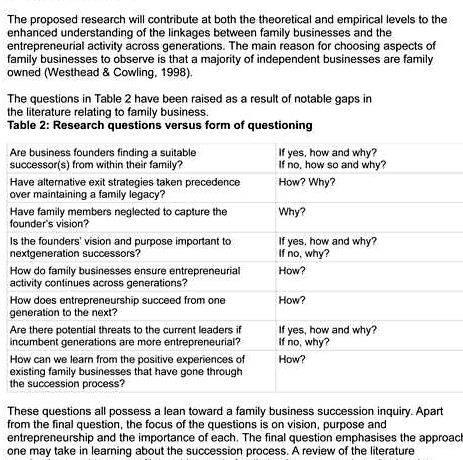


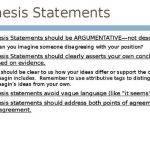 Writing a thesis paragraph for a research paper
Writing a thesis paragraph for a research paper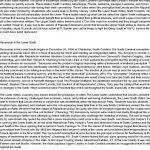 I need help writing my research paper
I need help writing my research paper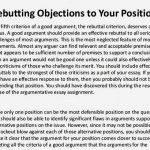 Writing a good thesis for a rebuttal paper
Writing a good thesis for a rebuttal paper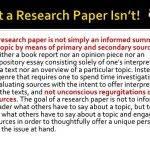 Research report paper writing thesis writing ppts
Research report paper writing thesis writing ppts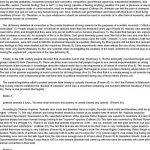 Animal abuse research paper thesis proposal
Animal abuse research paper thesis proposal






